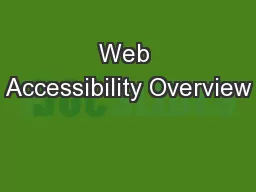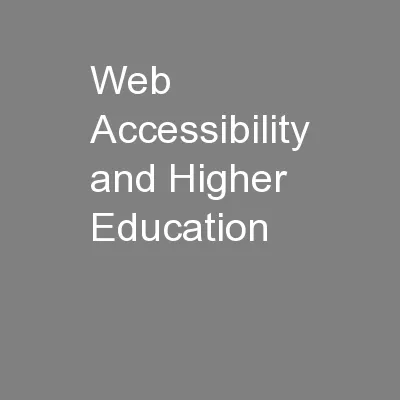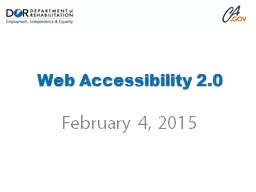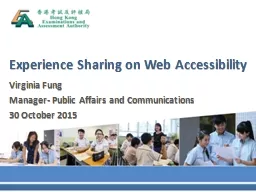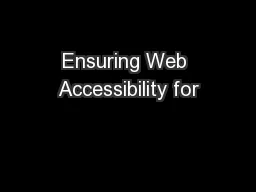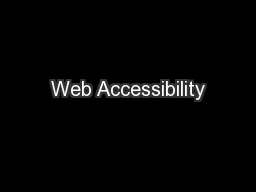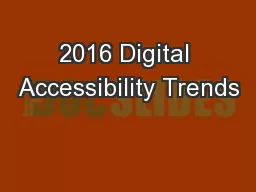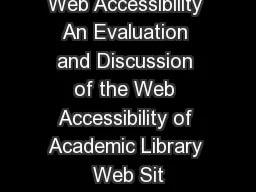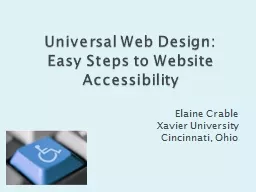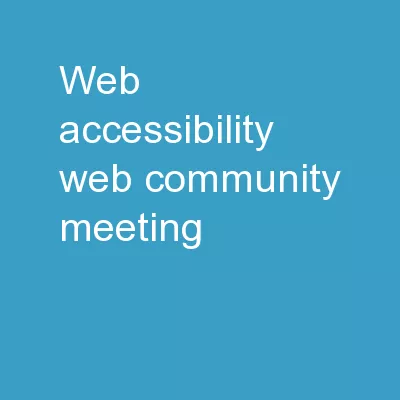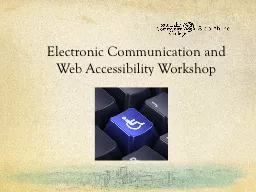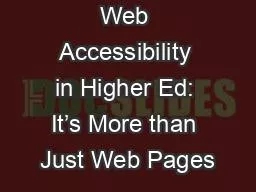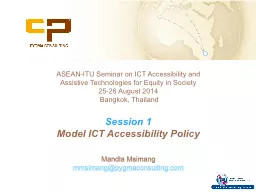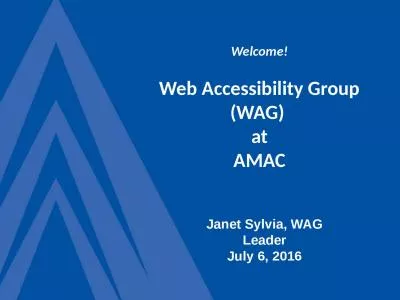PPT-Web Accessibility Overview
Author : faustina-dinatale | Published Date : 2017-12-13
Jeremy Bock Web Developer About me Web Developer for 8 years Worked at the CED for last 5 focusing on Web Accessibility Led task force to define WVU Web Accessibility
Presentation Embed Code
Download Presentation
Download Presentation The PPT/PDF document "Web Accessibility Overview" is the property of its rightful owner. Permission is granted to download and print the materials on this website for personal, non-commercial use only, and to display it on your personal computer provided you do not modify the materials and that you retain all copyright notices contained in the materials. By downloading content from our website, you accept the terms of this agreement.
Web Accessibility Overview: Transcript
Download Rules Of Document
"Web Accessibility Overview"The content belongs to its owner. You may download and print it for personal use, without modification, and keep all copyright notices. By downloading, you agree to these terms.
Related Documents

